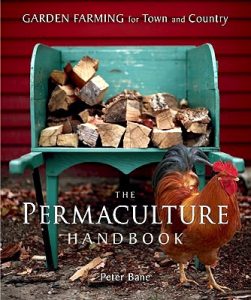
Reviews of
The Permaculture Handbook

“As oil becomes more scarce and expensive, society must adapt by re-localizing food systems. The Permaculture Handbook offers us a set of essential conceptual and practical tools for doing this in a way that’s intelligent, beautiful, and sustainable. Want to create a better world? Your backyard – and this book – are the places to start.”
– Richard Heinberg, Senior Fellow, Post Carbon Institute, Author, The End of Growth, Peak Everything, The Party’s Over

“A book to carry us through Eden, this keen, comprehensive design guide with its wisdom and instruction will be indispensable to any household aiming at flourishing, soil-based self-reliance. The practice is permaculture and Peter is a true master.
– Stephanie Mills, author of On Gandhi’s Path and Epicurean Simplicity
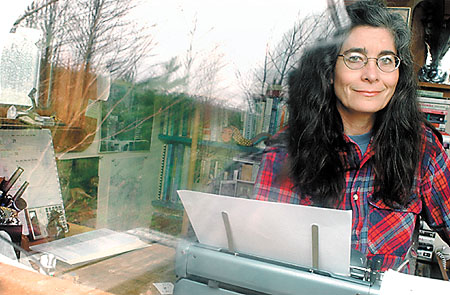
“Peter Bane’s characteristic generosity and mastery are on display in the long-anticipated encyclopedia of permaculture knowledge and lore. The Permaculture Handbook offers a thorough treatment of the design principles and patterns that of necessity precede the positive, practical, and profitable solutions that are the hallmark of permaculture design. Bill Mollison famously taught that we can create the “Garden of Eatin'”. Peter Bane shows us how.
– Claude William Genest, Former Deputy Leader of the Green Party of Canada, Producer / Host of the Emmy nominated PBS series “Regeneration: The Art of Sustainable Living
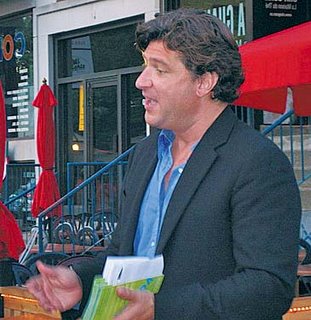
“Here is an exquisite design manual for re-inhabiting our towns and cities, transforming them into flourishing and nourishing landscapes that provide food, fiber, energy and community. As you read this book, looking out from time to time at the paved, manicured tracts we’ve called home, you can almost see the world around you transforming – a fruit tree here, a greenhouse there, a hill of corn, beans, and squash in the corner, a photovoltaic array that charges your electric bicycle nearby. We are not in an era of despair, of coming apart. We are in an era of creativity where strong seeds grow in the very cracks in the concrete of our old way of living. I applaud Peter for the wisdom, intelligence and hard work he has invested in his detailed, beautiful map of the land of permaculture.”
– Vicki Robin, author Your Money or Your Life and Blessing the Hands that Feed Us

“The wealth of practical knowledge in The Permaculture Handbook is a welcome addition to North America’s canon of books on permaculture design, and will serve other regions as well. Peter Bane’s broad and well-tested experience in ecological living, expressed here in clear and engaging prose, will guide homeowners, gardeners, and small farmers toward designing and lining in lushly productive and harmonious landscapes.”
– Toby Hemenway, author of Gaia’s Garden

Podcast Review of The Permaculture Handbook: Garden Farming for Town and Country by Scott Mann.
“With a lifetime of Permaculture immersion under his belt, Peter Bane’s contribution to domestic self-reliant security in this comprehensive handbook is nothing short of remarkable. This will empower thousands of seekers to move off the bleachers and into the game. He balances beautifully the right amount of intensive ecological information with delightful case studies and practical outworkings. A gem of a manual. Thank you, Peter.”
– Joel Salatin, Author, Farmer
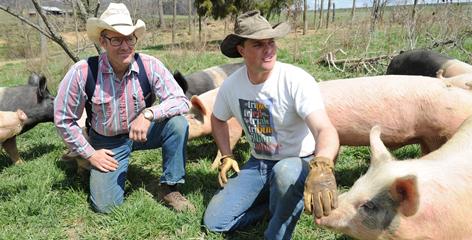
“There are a lot of people out there who want to know how to begin making a better world, but don’t know where to begin. I can’t think of a better starting point for someone who wants to restore and transform their place than Peter Bane’s Permaculture Handbook. Bane has taken the single most urgent question of our times, “How shall we live?” and given a real and viable answer.
– Sharon Astyk, writer, farmer, teacher and author of Making Home, A Nation of Farmers, Depletion and Abundance
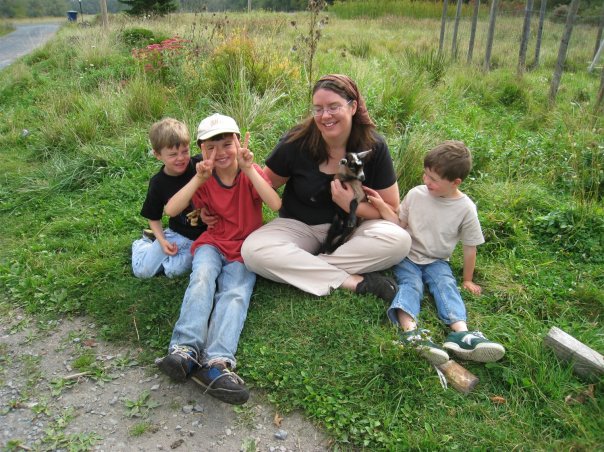
“The Permaculture Handbook is worth reading and rereading not only for its depth of insight but also for its storytelling charm. Peter Bane’s reflections on community-based efforts to realize permaculture’s potential across entire landscapes helps us realize that this set of design principles are not vague abstractions, but something that we can smell, taste and see before our eyes.”
– Gary Paul Nabhan, ethnobotanist, writer, permaculture orchardkeeper, seed saver. Author of The Desert Smells Like Rain, Where Our Food Comes From, Coming Home to Eat


Reviewed By Vicki Lipski in the Transition Voice, July 26, 2012
Vicki Lipski lives, writes, and attempts to garden permaculturally in Loveland, Ohio. She writes about climate change, and the transitions it will require, at www.writeaboutwarming.blogspot.com
More of her writing can be found at
http://transitionvoice.com/author/vickilipski/

” Peter Bane’s big idea here is not entirely original — Toby Hemenway, David Holmgren, and even the UN Rappoteur on Human Rights have written about it — but it is timely and Bane describes it with greater depth and practical guidance. The big idea is that creation of 21st century garden farms at all scales and in all locations — horticulture not agriculture — provides a serious, necessary challenge to 20th century factory farms.”
When NASA was getting ready to put men on the moon, they developed a complicated mission plan, at the core of which was a critical path. These were the steps that had to be accomplished in order for the mission to succeed. They were non-negotiable.
Ever since the Manhattan Project in 1940-1943, critical paths have been used in engineering, and are now common in software development, skyscraper construction, aerospace and other large projects. When Apollo 13 found itself hurtling through space on the way to far side of the moon with a huge oxygen leak, a critical path was assembled that returned all souls safely back to Earth.
In his Permaculture Handbook, Peter Bane has mapped the critical path to a safe landing for civilization in the 21st century. That path runs through the back yards of suburbia and across the rooftops and balconies of urban apartment houses. As he precisely puts it:
“There can be little doubt that paving over much of the nation’s best agricultural land and cutting old growth forests to frame shoddily-built McMansions was a tragedy of epic proportions, but the question is not whom to hang but what can be done with it now?”
His prescription is garden farming, a step at a time, gradually expanding to tree crops and animal husbandry at the margins of cities and within cities themselves.
Peter Bane’s own accomplishments best fit his description of organic gardening: “as an heroic and undersung achievement in the face of overwhelming institutional neglect, cultural dissipation, economic monopolies and dire ecological challenges from … society.” He has labored long to produce a cohesive understanding of permaculture, at times being treated with less respect than he deserved. This book is his sweet revenge.
For decades he has been reading manuscripts submitted to the Activist, accepting some with edits, rejecting many, and sending more back for do-over. He has been the Activist’s principal book reviewer, and in that position has probably read far more new titles than he got around to writing reviews of. This effort, year in, year out, gave him a breadth and depth of knowledge that confers authority. To be as cynical and pithy as Bane can occasionally be, you have to really know your subject. Without laying an extended logical foundation in the fashion of a John Michael Greer or Jeremy Rifkin, he can shock you, but you absolutely believe him.
As a writer using his best gifts to bedazzle, Bane is not one to be speed-read. Rather you savor the page, paragraph and line, putting the book down to exhale after reading one of his exceptional flourishes.
Here is Bane on suburban-angst:
“During the 1950s this patchwork of farm fields, forest remnants and village-scale neighborhoods, peopled by the children and grandchildren of factory workers, immigrants, ex-farmers and other groups newly enriched by the war economy, became the dream landscape of the boomer generation, the largest in North American history. Small herds of children roamed this bucolic terrain, secure in the privilege their parents extracted as world conquerors until, of course, the next development took down a totemic patch of woods or replaced a mysterious meadow with a cul-de-sac of new houses. Perhaps it should come as no surprise that, as it reached adulthood, this age cohort sought meaning in nature amidst a world seemingly mad with the designs of human dominance, corporate conformity and mutually assured destruction from nuclear weapons.
As suburbs grew to become the dominant habitat, not just in the United States but in Latin America, Europe and Asia, the agrarian life receded farther and farther from view, leaving children to wonder where the food they see in stores comes from. For USAnians, the usual answer these days is China, same place their plastic, electric, planned-obsolescent stuff comes from. Amazingly, the same answer can now be provided to Mexican children, who used to eat corn and rice grown in Mexico. “Your country,” la abuela might say, “even exported to other countries,” like that one directly north.”
Bane’s central point is that we can go back, but probably not to the status quo ante. The future of agriculture is small-holder horticulture, not export agribusiness. But, here, let him say it:
“In a clumsy, expensive and still incomplete way, we have marked out a pattern for a democratic yeomanry. Many potential garden farms are located on some very fine former farmland: northern New Jersey, northern Illinois, the south end of San Francisco Bay and the Lake Ontario lowlands. And even where the soil was not originally well developed, the land is usually flat to rolling. These territories have been supplied with extensive road and water networks, and both labor and a rich array of resources, biological and industrial, lies all around. The largish houses, especially those built after 1980, may be poorly configured at present, but they could accommodate the extended families and larger households that will be needed to grow food and manage land with lower energy resources and technologies.”
That passage also reveals one flaw in the book that may pass unnoticed in North America but will glare when it traverses either ocean. The Handbook is a 450-page encyclopedia that provides everything a starting practitioner, or an experienced activist, might want to improve their use of permaculture, but despite occasional stray references to other parts of the world, the book is decidedly North American. Perhaps, since the Permaculture Designers Manual leans more to the tropics, the Handbook is best seen as the later half of a two-volume set. Together they book-end a 30-year span, with the Manual extending decades back to unfold Mollison’s foundational research and the Handbook extending decades forward to tap Bane’s exceptional perspicacity.
Permaculture books, and there seem to be a flurry lately, seem to fall into a few distinct categories. There are those that are a data dump of teacher notes, and The Permaculture Handbook suffers from this. It would be hundreds of pages slimmer without that, but it might not be a handbook.
Then there are those that take off in a particular narrow direction, like Bioshelter Market Garden: A Permaculture Farm by Darrell Frey (New Society Publishers 2011); People & Permaculture Caring & Designing For Ourselves, Each Other & The Planet by Looby MacNamara (Permanent Publications 2012), or The Empowerment Manual: A Guide for Collaborative Groups by Starhawk (New Society Publishers 2011). A Permaculture Handbook fits into this category too, with its special focus on developing a pattern of permanence for urban and suburban properties.
A third category contains those books that make a new statement that is foundational. These special books address a problem that has not been well addressed in the past. They pose a solution that will likely be pivotal in the future; one that many of us will build upon. Peter Bane’s big idea here is not entirely original — Toby Hemenway, David Holmgren, and even the UN Rappoteur on Human Rights have written about it — but it is timely and Bane describes it with greater depth and practical guidance. The big idea is that creation of 21st century garden farms at all scales and in all locations — horticulture not agriculture — provides a serious, necessary challenge to 20th century factory farms and our widely accepted myths of how best to feed, shelter and clothe 8 to 10 billion people confronting energy yield ratio decline and catastrophic climate change.
To Bane, if “the unhealthy industrial food system, which includes bought-and-sold politicians who dish out massive subsidies for a handful of commodity crops, giant mechanized farms and feedlots (complete with antibiotic-doped animals and antibiotic-resistant microbes), rail lines, barges, trucks and a few hundred airplanes, factories that butcher, extract, distill, emulsify, blend and preserve thousands of products from a tiny handful of basic crops, a vast amount of packaging and refrigeration and advertising agencies” is the solution, it’s worse than the problem it solves. It’s certainly not providing improved health, food security and longevity to the world population.
Bane’s Chapter 6, which could rightfully be a book of its own, lays out Bane’s vision of the alternative solution — garden farming. This is the author’s fusion of all those decades spent pouring over manuscripts, books and publications in the field. It is clear Bane has had the kind of “Ah Hah!” moment that Wallace had when he realized he’d unlocked the puzzle Darwin had foundered on, that extinctions were the key to evolution. While more modestly framed, Bane’s revelation is equally world changing.
Adopting the language of Christopher Alexander and his Berkeley team, Bane lays out 68 patterns in 38 pages. These are the DNA of sustainable re-development of the built environment and they bolster all three legs of the sustainability stool — ecological, social and economic. Here, for instance, is the harmony-auguring element of “Communal Bathing” (pattern 68):
The sauna room, like the back-deck hot tub, is very often detached from the house and invites bathers to be reborn into the open air. For a household that works together, communal bathing affirms that relaxation and renewal are not solely a private affair, and that the cycle of group life can regularly return to its root. Care for the body makes the boundary around Family Table (17) appropriately porous.
Place the communal bath in a well-protected location toward the private end of the household gradient. Combine its heat functions with food drying, a Greenhouse (38) or a utility space such as a Workshop (23). Let it be out-of-doors, directly opening to the outside of a building and near a pond for dipping if possible (33—Ponds and dams). Provide a roofed area for clothing to hang and benches for changing. Surround the bath with clean decking or pavement that can be swept and is free of hazards to the feet. Design the stove or water heater to run on wood fuel, so that this most primal of survival functions can be met from raw elements of the world at hand.
Equally delicious are Bane’s forays into his personal experiences as a lone hill-country farmer, then ecovillage pioneer and (currently) suburban remodeler. Here he talks about eating with the seasons:
“If you have a poultry flock you may already know that egg laying surges in spring. What might have been three or four eggs a day out of a dozen birds in the winter becomes 6, 8, 10 and 12 by late March. Suddenly, omelets are on the menu: asparagus and morels, spinach/cilantro or kale and shiitakes. Scallions are abundant in spring and grace every dish. Each day’s salad is a little different with lettuce, endive, beet greens, mizuna, arugula and early radishes mixing it up. Cut the bitterness with sweet berry jam and rich oils in the dressing. Later in the season, lambs quarters with their brilliant magenta tops enliven the bowl, and along the way redbud flowers, violets and pansies adorn the greens.
The crops of spring are meant to awaken us from the lethargy and depression of winter. They don’t fully relieve hunger, but begin to replace minerals lost during the months of eating stored food and battling cold. Bitter greens are tonic: the endives and first dandelions bring a powerful infusion of mineral nutrients to clean the blood and stimulate the liver. As dairy animals get onto green pasture, their milk fattens up and gains large amounts of Vitamin A, and this, plus the extra eggs from hens, make up some of the caloric deficit from cold spring days and extra work. Steam a pot of buckwheat and open a jar of applesauce to bulk up the menu.
Soon enough, the heat of May (or June if you are farther north) brings fruit and then new potatoes, peas and more carbohydrates, which need the extra light and heat to ripen sugar and starch. There may be some early beets, but the main excitement comes from the burgeoning berry crop. I love the seemingly endless fruits of this season but care less for the steamy days that sometimes accompany them, so I get up early and spend an hour picking while morning shadows still stretch over the bushes.”
In North America, more people are now choosing to start farming than at any time since World War II. It is difficult to imagine any of these new farms being without this book. It is a handbook for every season, and for every resource a farm can produce. It contains tips I have never seen anywhere else, reams of them, and they are collected and cataloged here in a way no piles of back issues of Permaculture Activist, Mother Earth News or Back Home would.
A man named Max posted to Club Orlov (Dmitry Orlov’s humorous blog) recently that he had purchased 160 acres in Southeast Kansas and tried to become a modern farmer. Southeast Kansas in the early 21st century is not like the Kansas described in S.C. Gwynne’s Empire of the Summer Moon — a near desert suitable only for buffalo and rugged Comanche horsemen — but stripped of modern HVAC systems it can yet turn cruel and deadly when the dirt blows in August and the blizzards in February.
“You realize after a while it is mostly hard, dirty, repetitive and boring,” Max relates, “ Mud, blood, shit, sweat, discomfort, disappointment, death.… To peer into the future and see nothing beyond an endless re-run of this hard living is enough to put fear and dread in most hearts. I find it increasingly difficult to believe that dispossessed cubicle dwellers will be able to adapt physically or mentally.”
Enter the hype about permaculture, wherein “the designer becomes the recliner,” “observation not perspiration,” “aikido not karate.” Has anyone actually succeeded with this?
Peter Bane is an archetypical egghead, a computer nerd, not someone you could imagine out in the mud and blood of the pig wallow behind the barn in Kansas. Given a working farm, he outfitted it with rainwater harvest systems, intensively mulched gardens and handmade building retrofits, but then settled back into reading and editing — the life of the mind — where he was much more at home.
Then, joining with friends to purchase a large tract of land and found the Earthaven Ecovillage in North Carolina, the same pattern re-asserted itself. His intrinsic nature overwhelmed any idealistic intentions to spend his days milking cows and chopping firewood (although he did). If you were to assemble all the book reviews and research pieces he wrote during that 20-year period, it could easily fill a large number of books. So how can someone like that rescue collapseniks from hard, dirty, repetitive and boring farming?
Answer: with elegance and grace. This is the real science of permaculture, warts and all, and the real discoveries that have flowed from a life of small experiments and probing observation. Bane intersperses stories and studies: of Jerome Osentowski, growing hothouse salad greens at 7200 feet in Colorado; of Bob and Betty Gregson, CSA pioneers who made a comfortable living on less than an acre of vegetable and egg production; of Radical Roots Farm in Virginia, a 5-acre family homestead that is walking the narrow line between market gardening and investing in ecosystems; and of Gene Logsdon, whose small-scale rotational grazing farm in Ohio gave him the leisure time to write 23 books of non-fiction and 4 novels.
Bane’s best advice is to never to think you can go it alone.
Through the exchange of labor that it will elicit, garden farming offers the promise of helping to heal our broken communities, even as it helps us to cope with the predicament of an energy-constrained future. Contrary to conventional economic thinking and many modern attitudes, people as workers and people as eaters are not the problem. They’re part of the solution. Creating a new way of life, or resurrecting the best parts of an older culture and offering to share that treasure with others — your family, your neighbors, young people in your community — could just be the adventure you’ve been looking for. If you set out on that yellow brick road though, be sure to pick up some allies along the way — you’ll need them, and they’ll need you.
And pick up a copy of the Permaculture Handbook, too. You’ll need it, and find yourself going back to it, again and again. Like the Apollo mission, Bane has jury-rigged our carbon dioxide removal system by re-tasking other components — small scale horticulture, aquatic plants and foraged trash, for instance — to buy us breathing room. This is a must read. I am buying copies as presents for my children and grandchildren.
Peter Bane’s handbook, while not quite encyclopedic, is nothing if not authoritative. I can honestly say, without fear of exaggeration, that I hold my head a little higher as I stride about my miniscule fiefdom, now that I’ve read The Permaculture Handbook: Garden Farming for Town and Country.
The stones Bane leaves unturned are few and far between. Once you’ve digested the author’s ruminations on mapping, patterns, and garden elements, perennials, water, soil, plants, crops, seeds, and animal husbandry, not to mention his lists of plants and the jobs to which they are best suited, there’s little chance you’ll walk away dissatisfied.
Bane’s treatment of these various aspects of garden farming (his preferred term) is methodical and complete. It was a relief and a delight to find that he allows both his sense of humor and political sensibilities to creep in from time to time.
He never forgets, however, that his purpose in writing is to distill over thirty years’ experience in the science and the art of permaculture. There is much to be learned. The complete novice may, in fact, find the author’s thoroughness a bit blinding. In this case, a piecemeal approach could well be the best one.
Bane himself advises the reader to start small, and good advice it is. As you proceed to branch out beyond the basics, the book’s tidbits of information and advice will take on more and more relevance.
Pass the salt
For instance, did you know that if your fruit isn’t sweet, or your vegetables are the object of an insect infestation, it’s probably because your soil suffers from a mineral deficiency? Your soil is in need of amending (most everybody’s is, to one degree or another).
It has been my contention, almost from the day we moved to the Cincinnati area, that the foods here are extremely bland. Now I understand why! The soil here is just awful – a tan, clumpy clay that is utterly devoid of worms and organic matter, and therefore completely unable to hold onto water. If it’s possible to be deficient in everything, then this soil is. For folks in these parts, permaculture could literally spice up their lives. Good soil is the beginning of good eating.
Here’s some more great advice that, by itself, is worth the purchase price of the book. On page 88, we learn to,
… keep all soil growing some crop at all times …Seed or transplant the next crop as soon as or, better, before the maturing one is harvested.
This book is packed with wisdom gleaned from decades of working the soil. Assuming I get my sonic mole repeller in time (they’re tunneling me out of house and home), the winter squash will go in and around my thriving tomato plants. If I can lay my hands on some more cabbage seeds, they’ll go in at the same time (the first planting was a washout).
With a cluck, cluck here…
The animal husbandry section offers a cornucopia of down-to-earth knowledge and advice.
I’ve long harbored the desire to raise chickens, but here – as elsewhere – we belong to a homeowners’ association, so I’ve been frustrated yet again.
For those among you lucky enough to be able to own livestock, take a close look at chapter 14, “Animals for the Garden Farm.” Interestingly, there are three animals which Bane believes the garden farmer should steer clear of: horses (not worth the upkeep), sheep (prone to parasites, need lots of land), and donkeys (need land).
He also takes on the ethical conundrum of raising animals for meat, as well as the importance of their breeding.
There is a lovely, lengthy section on beekeeping. Yet I believe this section includes a rare, important oversight; that is the failure to discuss Colony Collapse Disorder. This is just too important a problem to ignore. I hope it will be covered in the inevitable second edition.
The Permaculture Handbook is liberally adorned with black and white drawings and photographs. As can sometimes be the case with garden and farming pictures, the subjects of photos are occasionally difficult to determine. This problem is further exacerbated by the fact that permaculturists (I include myself) do not necessarily pride themselves on a tidy garden farm. Everything tends to be a “work in progress,” and it shows. Such concerns notwithstanding, the color photos are particularly well done; the numbered captions are easily understood. The photos appear to have been carefully selected, and truly do add a needed dimension that bolsters the book’s authoritativeness.
If they can, you can!
Finally, Bane’s case studies include an up-to-the minute analysis of his own Renaissance Farm, in Bloomington, Indiana (also home to the magazine The Permaulture Activist). His year-by-year history of the progress he and partner Keith Johnson have made in turning their .7 acre into a working farm makes for genuinely interesting reading. As Bane describes the endlessly cyclical nature of what they do, “Self-reliance and food storage are both increasing. Soils are improving. The growing season is now year-round.”
Would that we could all say the same.
Working examples
Other operations are described, as well: Jerome’s Organics, of Basalt, Colorado; Old 99 Farm, in Dundas, Ontario; and Radical Roots Farm, of Harrisonburg, Virginia.
Jerome’s is far and away the oldest of the four farms described, established in 1982. It’s also different in that its primary mission is educational, both insofar as garden design is concerned, and with regard to producing successful yields. Jerome Osentowski welcomes students and visitors to his demonstration garden and educational programs year-round.
The other two garden farms were much more recently established. In the case of Old 99 Farm, operator Ian Graham sells winter vegetables, eggs, dairy and cow-shares. Radical Roots operators Dave O’Neill and wife Lee Sturgis offer annual vegetables, nursery plants, and eggs. Dave teaches permaculture design, and consults. Lee and Dave hire paid interns, affording a valuable opportunity to up-and-coming garden farmers.
I’ll leave you with a parting thought of my own – this book deserves to be a part of your gardening library – and one of Peter Bane’s:
“The essential work of Permaculture activism is to understand and see abundance in the world around us, often before others do, and then to help others to see it also, to bring it into being.”
Sounds exactly right.
–Vicki Lipski, Transition Voice Magazine
